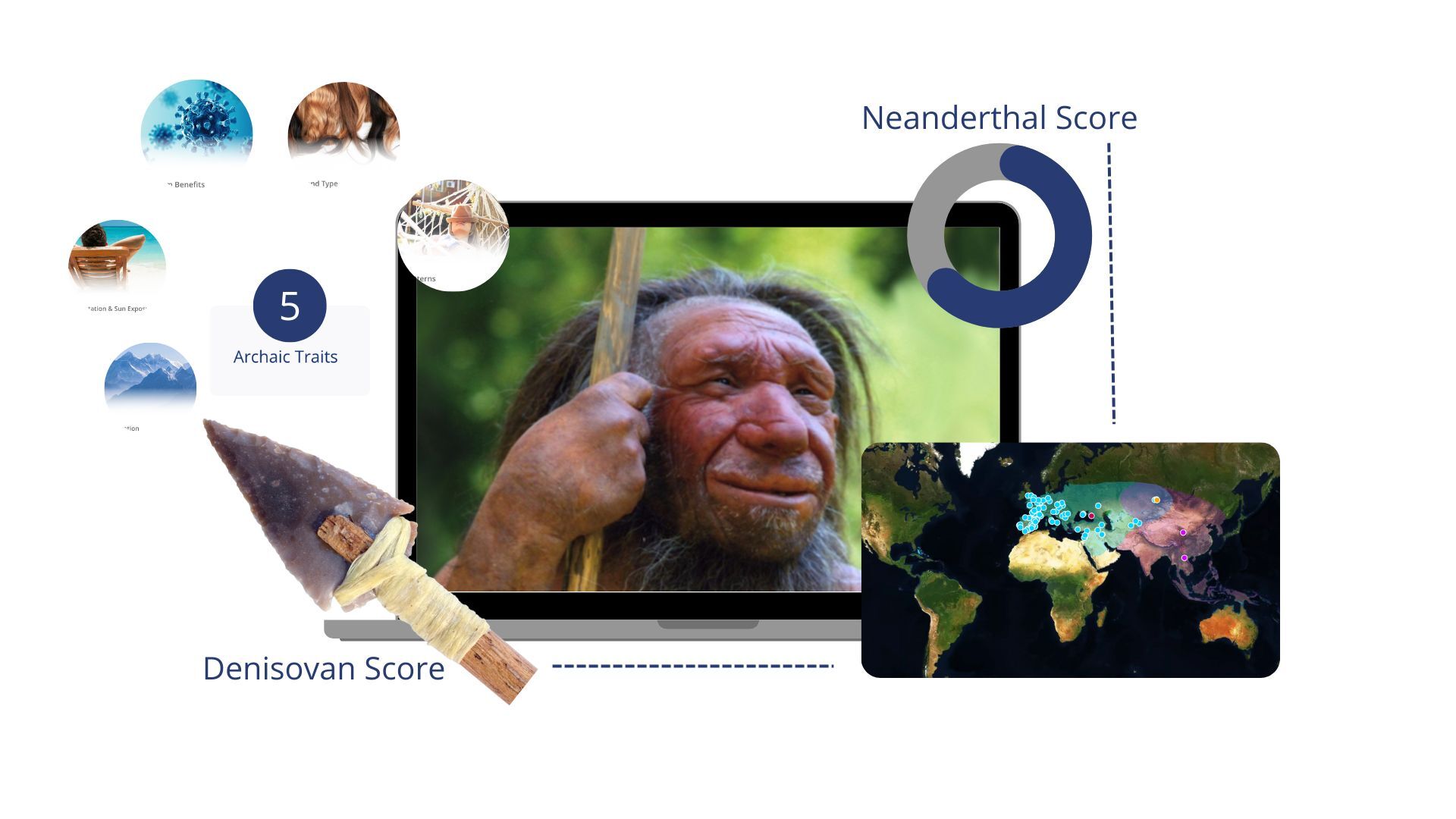Who were the Neanderthals?
In this blog post, we embark on a fascinating journey through time to explore the world and the genetics of Neanderthals (homo neanderthalensis), a distinct hominid species that coexisted with anatomically modern humans (homo sapiens) for a significant part of our prehistory. They first appeared around 400,000 years ago and thrived until about 40,000 years ago when they mysteriously disappeared.
Neanderthal Anatomy
With Halloween on its way, let’s talk about skeletons!
From the fossils they left behind, we know that Neanderthals were well adapted to their environment. They had robust, stocky bodies, shorter limbs, and larger brains which are all likely to have helped them to conserve heat in the cold climates of Europe. Their bones show that they tended to be very muscular, with a strength that was well suited for hunting the larger mammals that roamed the earth at the time.
Although we don’t know the exact ecological niche it evolved to serve, the Neanderthals are well known for their distinctive pronounced brow ridge. Theories behind it range from sexual selection for more prominent - and therefore dominant - features signalling strength in a mate, to a more mechanical explanation of a facial structure more suited to chewing meat.
Neanderthal DNA has also shed light on the less obvious adaptations that allowed them to thrive in their environments, that would not be visible to the naked eye. Researchers have identified specific genes associated with traits such as immune response, skin and hair colour, and metabolism that are all influenced by Neanderthal DNA in modern humans.
Culture
Contrary to earlier beliefs that portrayed Neanderthals as primitive, recent archeological discoveries have begin to reveal their complexity. Neanderthals were skilled toolmakers, creating stone tools and using them for a variety of purposes.
They also had a rudimentary art form, as evidenced by cave paintings and perforated shells that indicate they were used as beads found in archeological sites across Spain.
Although many of them had a mostly carnivorous diet - particularly in the coldest climates where other food sources would have been scarce - researchers have found that in some regions they had a more varied diet. By looking at DNA found in the tooth plaque of a Neanderthal skull at El Sidrón in Spain they were able to determine that the individual had eaten pine nuts, moss, and mushrooms.
Intelligence
Would you trust a Neanderthal doctor?
The same Neanderthal individual in Spain who had been eating pine nuts and mushrooms certainly had, or knew someone who had, a rudimentary medical knowledge. There is evidence that they were suffering from a dental abscess and a stomach bug that was being treated with poplar - a natural painkiller - and the antibiotic-producing Penicillium bacteria.
In fact, there is mounting evidence to suggest that Neanderthals had cognitive abilities that allowed for complex thinking and problem solving.
They likely had language, however different from our own modern human languages this might have been, and could have engaged in social and symbolic activities, but sadly it is impossible to know any of this for certain.
Interaction with modern humans
One of the most intriguing aspects of Neanderthal history is their interaction with anatomically modern humans. Genetic studies have shown that modern humans and Neanderthals interbred to some extent, leading to the presence of a small but significant percentage of Neanderthal DNA in non-African populations today.
This indicates that the two hominids not only lived at the same time as one another, but occasionally they crossed paths.
In recent years, the field of genetics has made incredible strides in unravelling the Neanderthal story even further than the archaeological record has been able to. By analysing ancient DNA extracted from Neanderthal remains, scientists have been able to reconstruct their genome. This breakthrough has provided profound insights into our genetic connections with Neanderthals.
Mystery of extinction
The exact reasons for the Neanderthal extinction remain a subject of debate among scientists. Climate change might have played a part with the more specialised bodies of the Neanderthals unable to keep up with the rapid change. Competition with anatomically modern humans - our own ancestors - is another common theory. They may have been in competition for food, shelter, or other important resources at the time. Infectious diseases, could theoretically have taken their toll on the population, or - most likely - a combination of factors may have had a part in their demise.
So what's next?
The story of Neanderthals is a captivating tale of a unique hominid species that lived, thrived, and eventually vanished from the Earth. Through the combined lenses of archaeology and DNA, we continue to uncover their secrets, shedding light on their lives, culture, and the factors that led to their extinction. As we delve deeper into the past, we come to appreciate the complexity of our shared human heritage and the enigmatic legacy of our ancient cousins, the Neanderthals.

You can unlock the secrets of how the Neanderthals have influenced your DNA with Living DNA’s Archaic Ancestry upgrade. Visit the store in your portal, or click here to learn what we can tell you about your Neanderthal genes.
